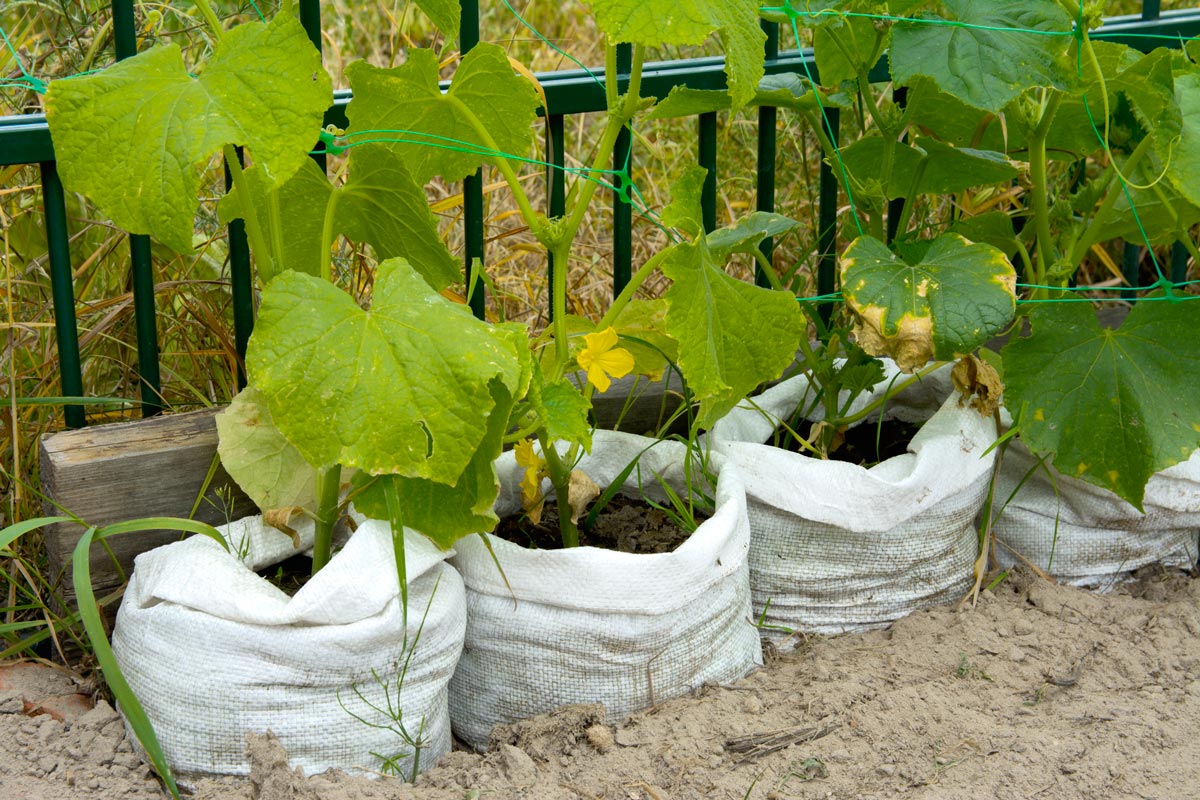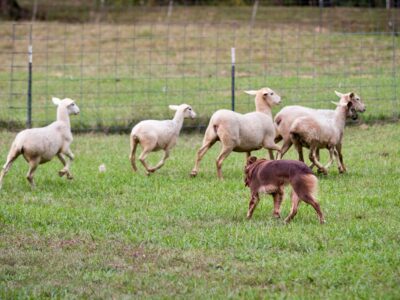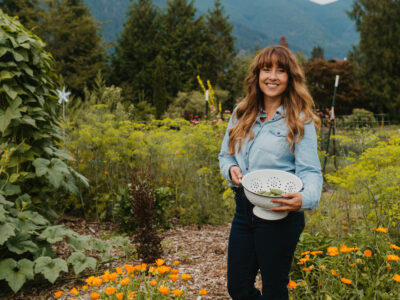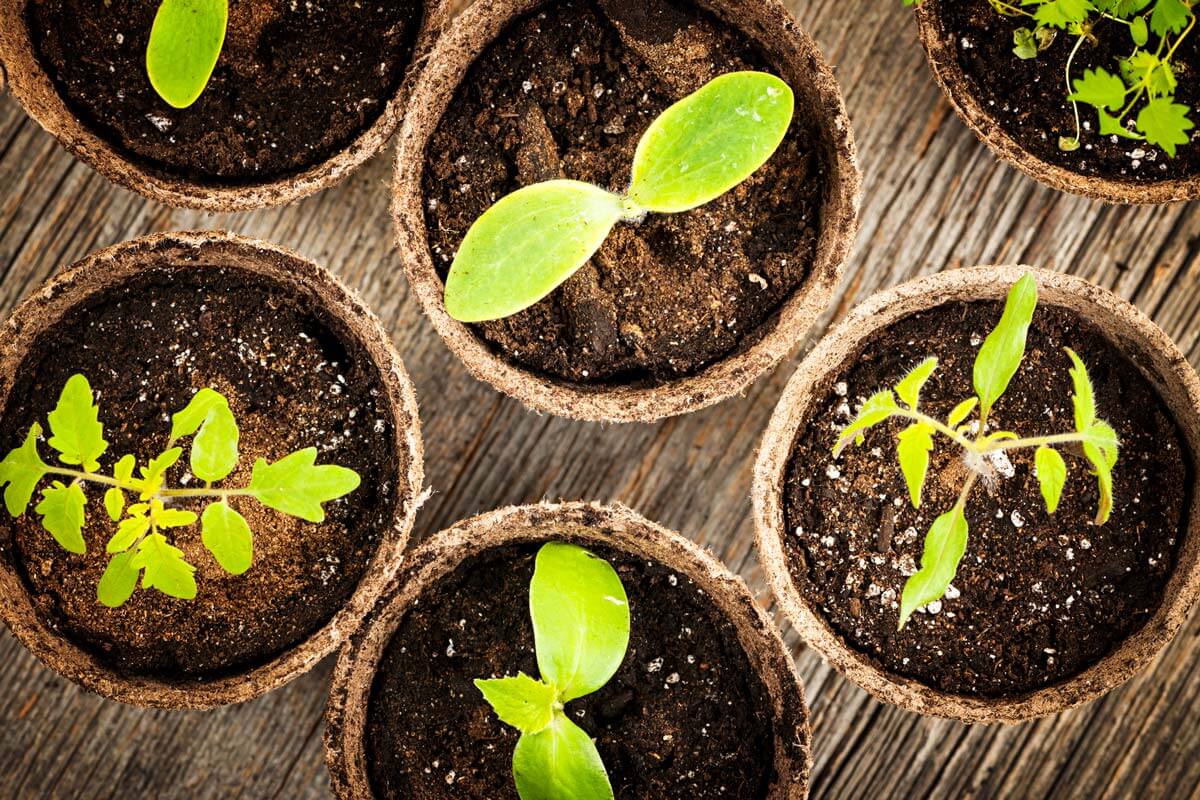One medium of growing vegetables that I’ve been excited to try is using grow bags in the garden. They’re moveable, breathable, and can be stored away in a very small space. Find out all about using grow bags in the garden!
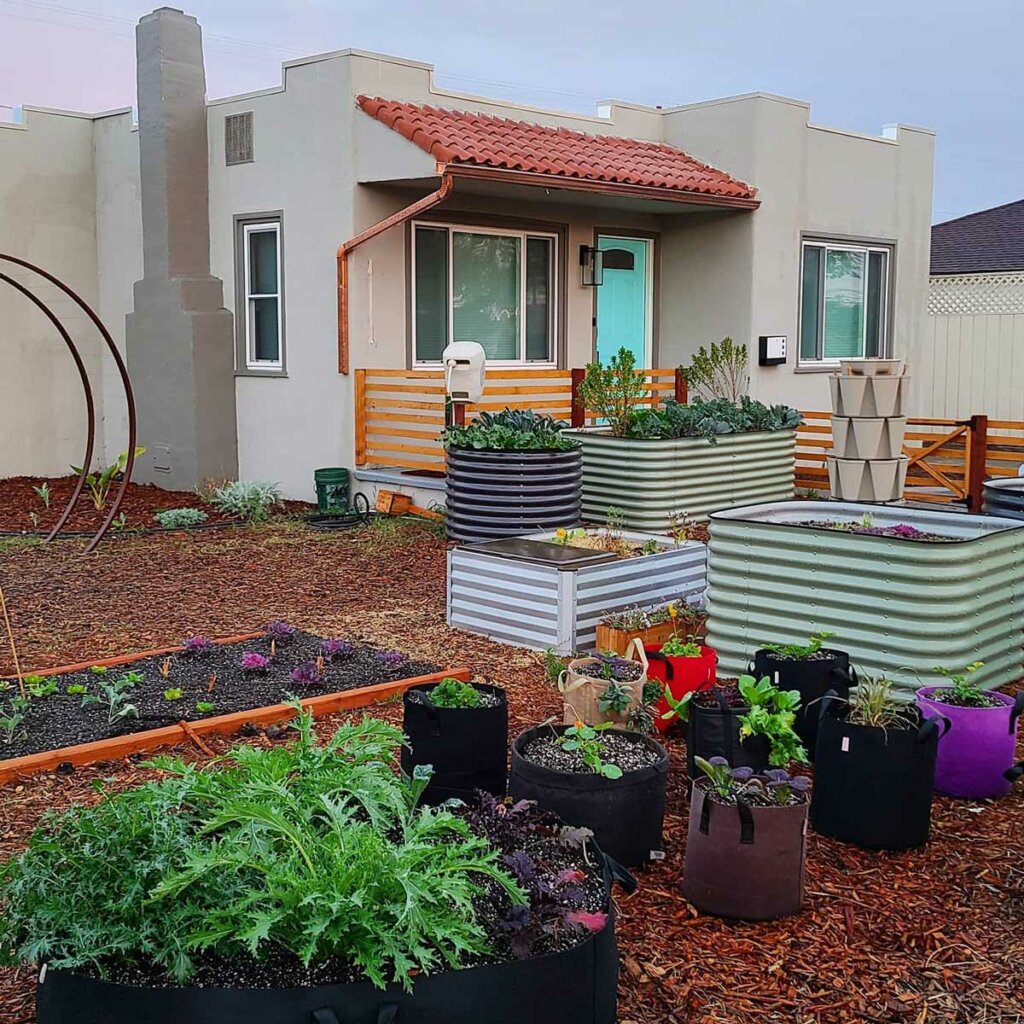
I’m excited to welcome back Kevin Espiritu, from Epic Gardening to the podcast. He’s been with us before, sharing his tips on small space vegetable gardening and urban gardening. Today he’s back on the Pioneering Today Podcast (episode #311) to talk about grow bags!
Kevin has recently moved to live on 1/3 of an acre and produces a tremendous amount of food (he previously had much less land and still produced a ton of food!), debunking that common gardening myth that you need a lot of land to produce food.
Kevin does this by utilizing many different growing mediums, testing each medium with different crops to see which works best, and then building on that year after year. One of his favorite growing mediums are grow bags.
Table of Contents[Hide][Show]
What is a Grow Bag?
A grow bag, if you’ve never heard of them before, is just that… a bag that you can grow in! It’s comparable to container gardening, however there are some definite benefits of using a grow bag.
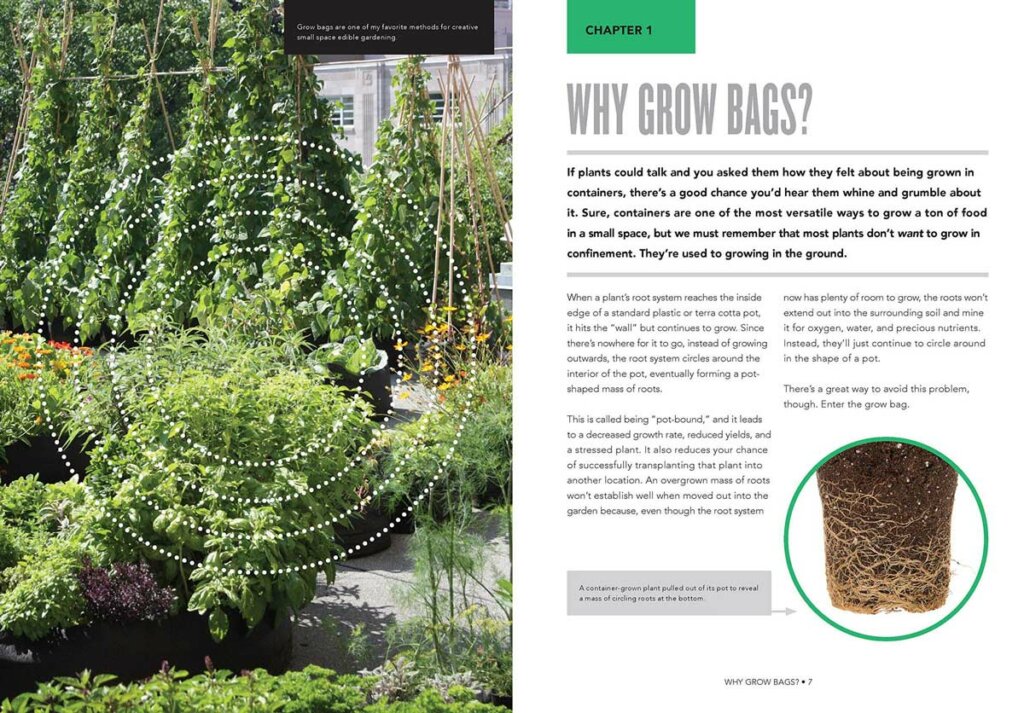
Why Use Grow Bags in the Garden?
Great for Small Spaces & Easy to Move
Grow bags are a great option for small spaces because you can move them around if need be and you’re not committed to growing in a specific spot year after year.
If you’re limited to a small space, such as an apartment balcony, you can still grow and harvest quite a bit of food using just one small kitchen grow bag (pictured below).
Easier Soil Ammendment
Grow bags allow you to amend the soil within the bag in less time than amending soil in the ground or even a raised bed because you can dump the soil out, mix in your amendments, then fill the bag back up and start your next crop.
I love this time-saving trick so much that I included it in my Time-Saving Tips For New Gardens.
Grow bags are also very helpful if trying to grow multiple crops per year, as both Kevin and I try to do.
Prevent Plants From Getting Root-Bound
The main reason Kevin likes using grow bags (if he’s growing in a container and not in the ground) is that the grow bags can help prevent plants from becoming root-bound.
As the root tip grows toward the exterior of the bag, it hits oxygen and there isn’t a lot of water available. The roots are essentially pruned as they die back and the plant can focus on growing stronger internal roots. Since the roots die back, they don’t continue to grow in on themselves, which is how plants become root-bound.
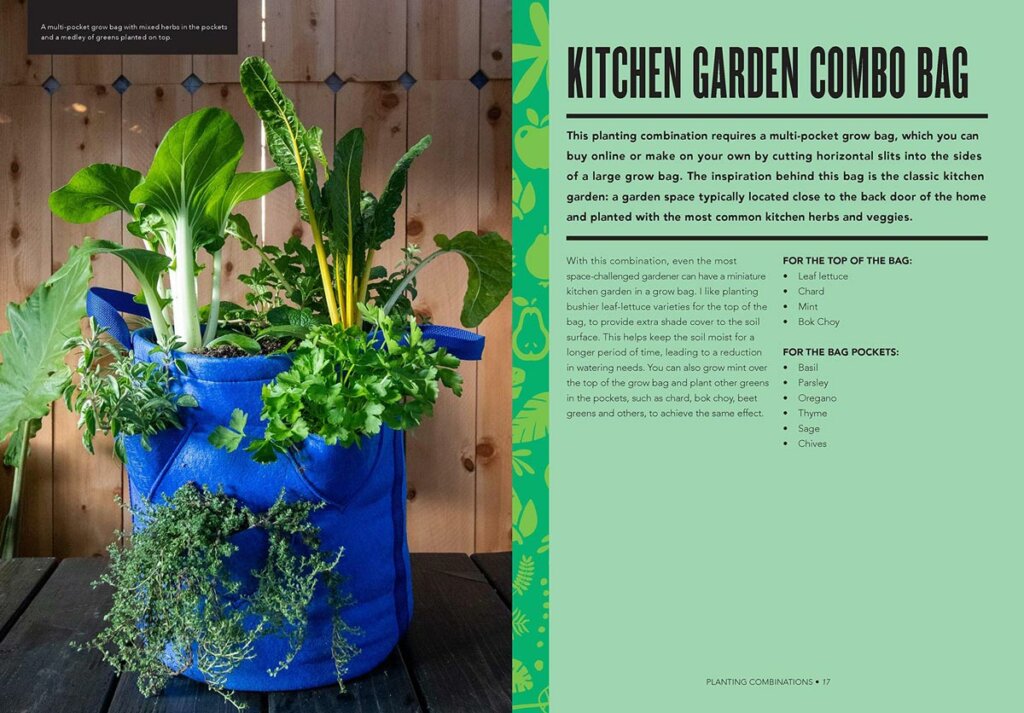
What are Grow Bags Made of?
Grow bags come in all different shapes, sizes and materials, so you’ll want to do your homework before going out and purchasing them. The sturdier fabrics such as polypropylene, nylon and canvas will last many more years than using something like cotton, plastic, burlap or other less sturdy materials.
Grow Bag Drawbacks
There is a small tradeoff with using grow bags, but not one that outweighs all the benefits. Because grow bags are exposed to the air on all sides they do tend to dry out and need watering more frequently than plants growing in the ground.
However, you can mitigate this issue a bit by not planting in anything that’s smaller than 7 gallons in size. You can also add some Coco Coir to help hold more water, add a dish underneath the bag to help contain some of the water, add a layer of mulch on top to help keep water from evaporating out, etc.
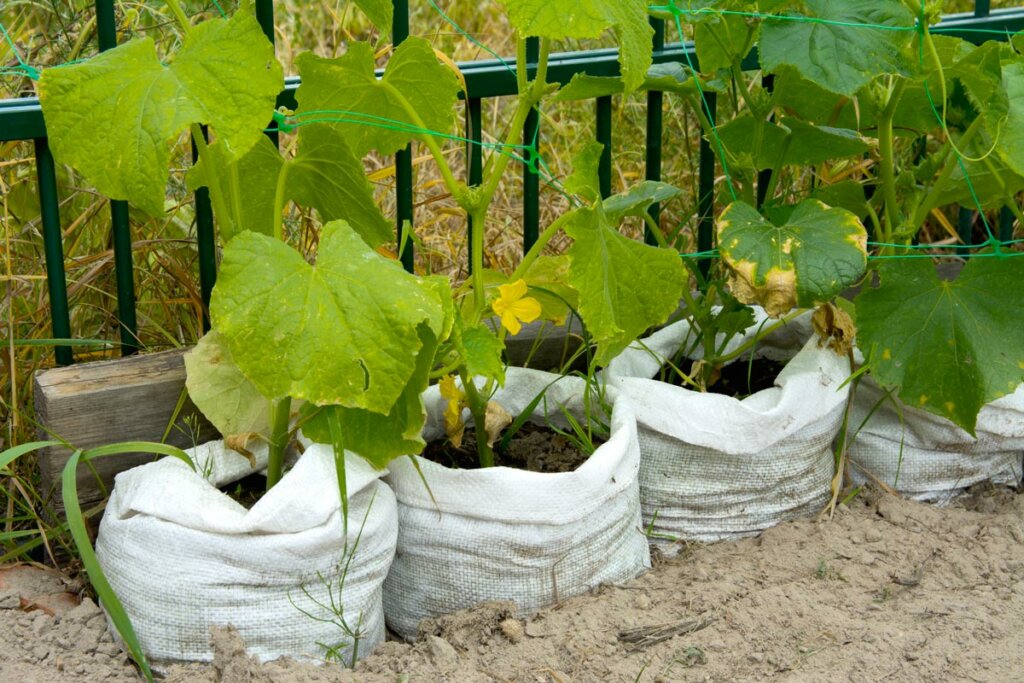
Grow Bag FAQs
Do Grow Bags Need New Soil Every Year?
I asked Kevin whether or not he recommended adding new soil to the grow bags each year, or between plantings, or if you can just reuse the same soil.
He recommends adding amendments, but not dumping the soil after each use. The great thing with grow bags is they’re often small enough to lift and dump into a wheelbarrow, add your amendments right into the wheelbarrow, then scoop the soil back into the grow bag to start again.
What is the Best Soil to Use in Grow Bags?
It’s not recommended to just grab soil from your garden and scoop it into a grow bag (this isn’t recommended for pots either). It’s important to use potting soil, or soil that’s had amendments added to make the soil rich in organic matter, well-draining, and full of nutrients for the plant.
Kevin recommends using Coco Coir as it’s a light organic material that will give your soil more aeration and will help retain moisture.
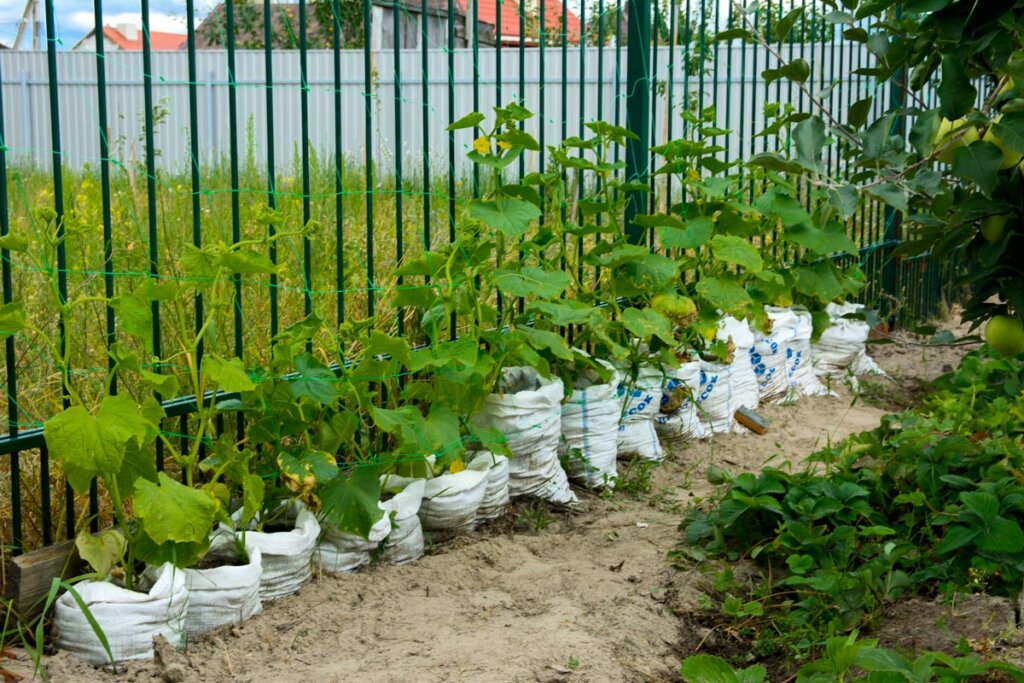
How to Water Your Grow Bags
You can water your grow bags just as you would any potted plant. Kevin recommends, if possible, setting up a self-watering system. He uses drip spikes with adjustable valves so he can increase or decrease the amount of water going to each grow bag.
Where can I Find Coco Coir?
Kevin recommends looking for Coco Coir from your local home and garden store. he also sells them on his online store, or you can even find them on Amazon.
Can You Grow Perennials in Grow Bags?
I wondered whether grow bags would work for larger perennials, crops that come back year after year, or if Kevin recommended only growing annual crops in the grow bags.
He mentioned that he has over-wintered some crops in his grow bags, as well as growing fruit trees successfully. What he does is ammend the soil for the length of the growth of the plant. Once the plant is dormant, he might size up the bag, or supplement with more compost in the soil, etc. But it’s important to do this during the plants dormancy, and not it’s growing cycle.
He also recommended, if growing perennials in grow bags, to choose a larger-sized grow bag to start.
Using Grow Bags for Invasive Perennials
Grow bags are fantastic to use for those perennials that can be invasive, such as mint, oregano, etc. This allows you to grow your favorite herbs without them taking over your entire garden.
Kevin also grows fruit trees and anything else that you can over-winter. Bottom line, Kevin says, “If you can grow it in the ground, you can grow it in a grow bag!”
Can You Grow Root Crops in a Grow Bag?
Many people don’t think you can grow root crops in a grow bag, but Kevin says, as long as the bag is the correct size for the crop you’re growing, you’ll have no problem!
Carrots have been the root crop that Kevin has had the most trouble with, mostly because grow bags can be harder to keep the top layer of soil moist for proper seed germination. But with a little extra care during the germination cycle, you should have no problems.
All other root crops (beets, turnips, radishes, etc.) have a large enough seed size that Kevin hasn’t had issues with them germinating. Once the crops have germinated, there’s really no difference growing in a bag than in the ground.
Using Grow Bags for Potatoes
If you want to grow potatoes in your grow bags, for every 5 gallons of your bag you can add one more potato. Each potato generally produces about 8 potatoes. You can certainly plant them more densely, but you’ll just end up with smaller potatoes (or new potatoes), so if this is your goal, then plant more densely.
Be sure to check out my guide on how to plant and grow potatoes (the method is the same for in the ground or in grow bags!).
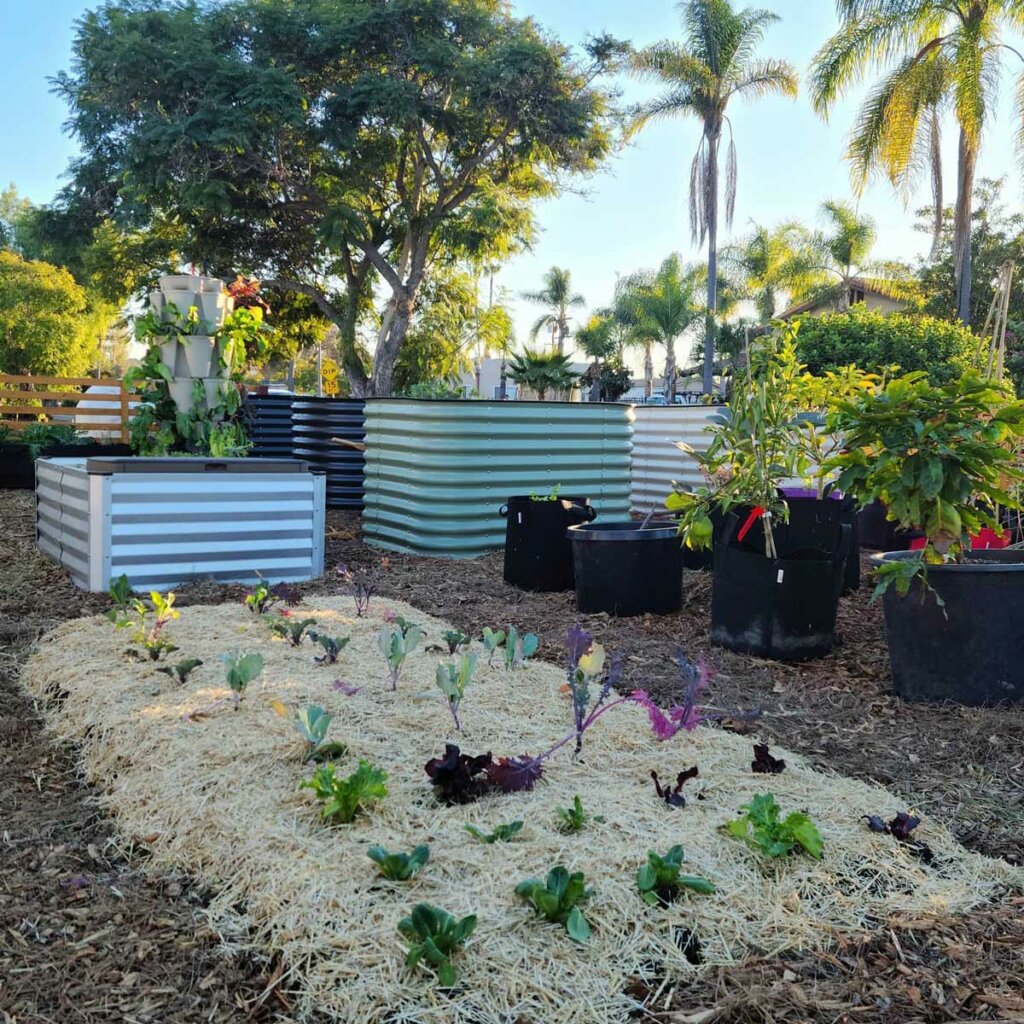
What Grow Bags Does Kevin Recommend?
Though he doesn’t have a particular brand or material he uses, he does recommend getting the right size grow bag for the job.
Just because you can buy 100 gallon grow bags, he doesn’t necessarily recommend getting this size because they’re extremely hard to move, especially when filled with water.
Though if you have need for the larger sized grow bags, be sure to have a way to move them. Kevin uses a dolly and that works very well.
Grow bags also come with handles on the sides, so if you have a couple strong-armed friends, moving them isn’t too difficult.
Moving the larger grow bags can have its drawbacks. The soil can crack and you can disturb the plant, especially if you’re growing trees or more well-established plants.
How Long do Grow Bags Last?
If you get a good quality bag, they can last about 5 years, especially if you take care of them.
Reusing Grow Bags
When your crop is done growing, simply harvest, pull the crops out, dump the grow bag soil into a wheelbarrow, add compost or other amendments back into the soil, then fill the bag up and plant!
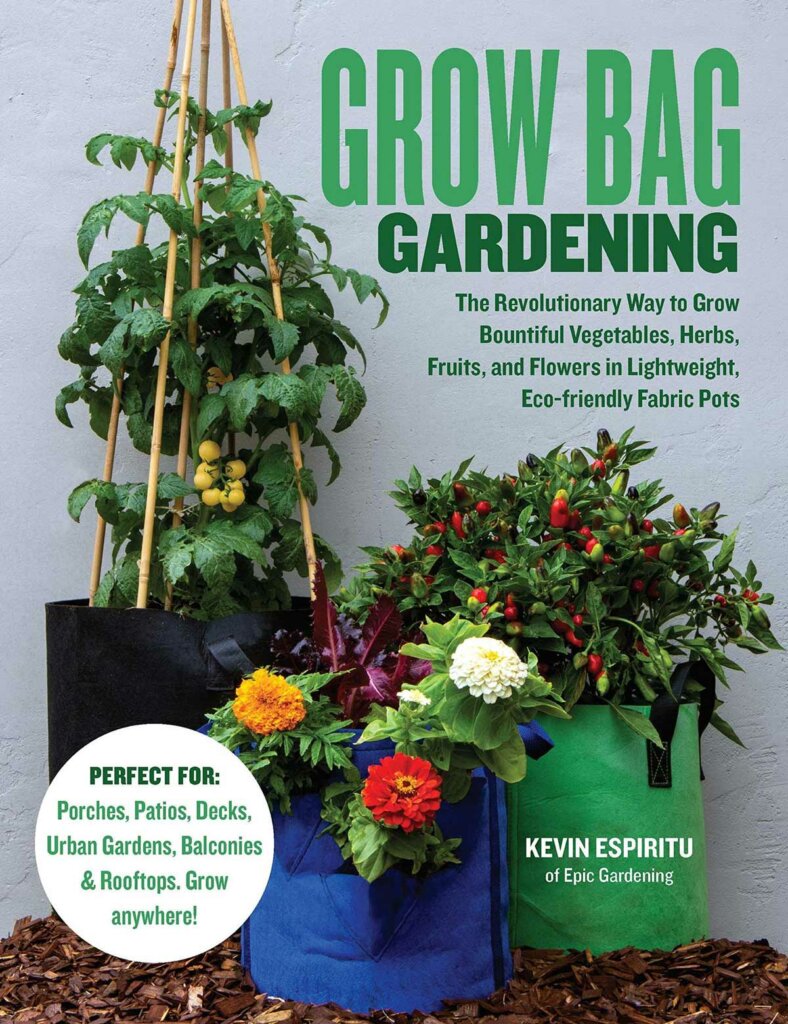
Where to Find Kevin
You can check out Kevin’s website, Epic Gardening for more gardening tips. If you want to find out more about using grow bags in the garden, grab Kevin’s book, Grow Bag Gardening!
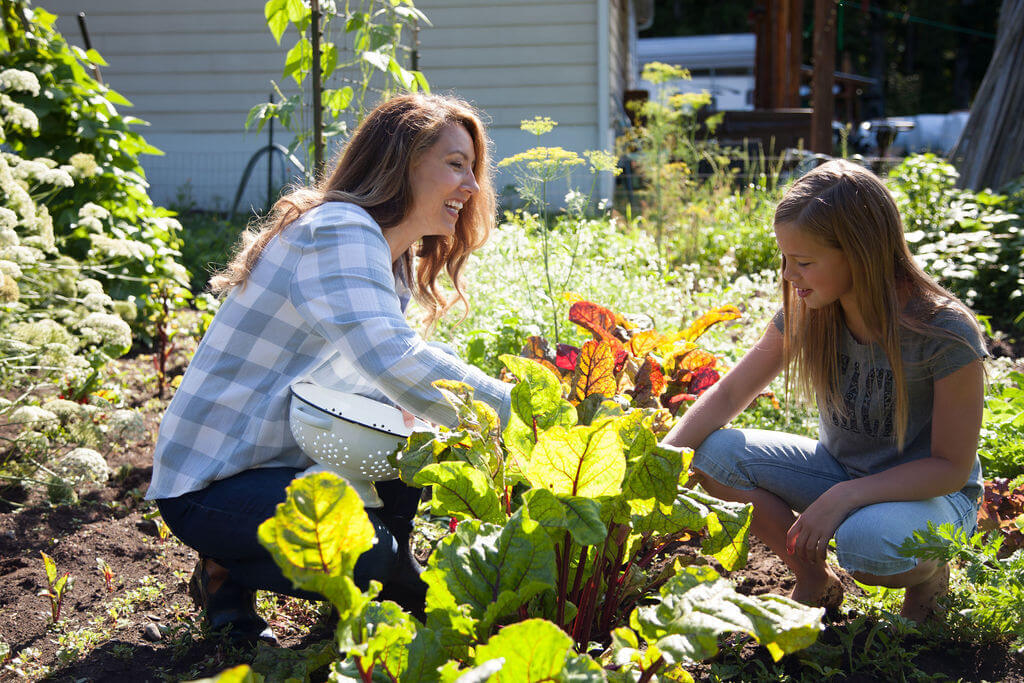
[fusebox_transcript]
Related Articles
- Container Gardening for Vegetables – Everything You Need to Know
- Small Space Vegetable Gardening (Urban Gardening Tips)
- Raised Bed Gardening Tips – 9 Things You Need to Know
- What is Organic Gardening & How to Start an Organic Garden at Home
- How to Improve Soil for Gardening
- How to Create a Gardening Plan for More Harvest and Less Stress
- Gardening in March (Garden Tasks by Month)
- Gardening in April (Garden Tasks by Month)
